- Administrator
- Albums and Singles
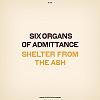 Ben Chasny returns with his tenth album under the Six Organs banner. There is a slightly softer approach compared to The Sun Awakens from last year but thankfully the electric guitar (which has improved the already formidable Six Organs sound no end) has been retained. There are few bands who use such a limited palette of instruments (i.e. just a guitar) for so many albums without sounding repetitive but Chasny can always be counted on to breath new life into those six old strings.
Ben Chasny returns with his tenth album under the Six Organs banner. There is a slightly softer approach compared to The Sun Awakens from last year but thankfully the electric guitar (which has improved the already formidable Six Organs sound no end) has been retained. There are few bands who use such a limited palette of instruments (i.e. just a guitar) for so many albums without sounding repetitive but Chasny can always be counted on to breath new life into those six old strings.
When Six Organs are good, it is awe inspiring and with Shelter from the Ash my awe has well and truly been inspired. The album begins on a mesmerising note with "Alone with the Alone," named and inspired by the Henry Corbin book. Chasny's fingerpicking is sublime; his pull-offs and hammer-ons add a layer of intricacy to the already elaborate fabric of the piece. Gorgeous acoustic guitar makes up the main body of the song and the howling, primal roar of the electric guitar (at first Chasny alone and later with producer Tim Green picking up the axe) adds an element of desperation to the mood. Hushed chants of the song/book's title make the mood seem even bleaker but still enthralling.
"Coming to Get You" is the fiery epicentre of the album. Blistering guitar solos are like smears of paint over the canvas of chugging palm-muted guitar and drum rhythms. The song finishes as a crude but intense portrait of a hellish scene, like Goya if he was in a psychedelic guitar band. Immediately afterwards is the tender and elegiac "Goddess Atonement." The song is dedicated to the late Charles Gocher of the Sun City Girls and would not sound out of place on Torch of the Mystics. The East-meets-West rhythms and melodies do not sound like exploitative exotica (which the Sun City Girls have been often, wrongly, accused of) but a hybrid language like Creole; imbued with its own life.
Six Organs of Admittance may sometimes confound and surprise but disappointment is not a word I associate with Chasny. Thankfully after several runs through Shelter from the Ash my prediction has been proven to be true. This is a captivating album, full of passion and power. Here's to another ten albums.
samples:
Read More
- Administrator
- Albums and Singles
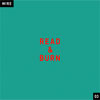 This EP, snuck on the unexpecting listening populace after a great deal of speculation that there may never be any additional output from the band, seems to herald yet another reinvention. If the sound on this EP is any indication, the forthcoming studio album may very well be the modern Chairs Missing to Send's Neo-Pink Flag.
This EP, snuck on the unexpecting listening populace after a great deal of speculation that there may never be any additional output from the band, seems to herald yet another reinvention. If the sound on this EP is any indication, the forthcoming studio album may very well be the modern Chairs Missing to Send's Neo-Pink Flag.
Although not a drastic shift from 2001's album (as well as Read and Burn 01 and 02), this newer installment is somewhat more subdued and melodic than the post-digital thrash hardcore that "Comet" and "Spent" managed so well. Indeed, the electronic sheen has crumbled away and there is an overarching sense of melody that was obscured by the crunch and feedback before. This is immediately apparent during the opening ambient textures of "23 Years Too Late" that mesh with Graham Lewis' inflected baritone reading from his travel diary over minimal high hat and bass strums. Even the chorus passages, with Colin Newman's snarl set on "calm" and Robert (Gotobed) Grey's fast pace metronomic drumming still feels more subdued than pretty much anything from Send.
The lumbering "Our Time" channels "Lowdown" in its lurch, "the time is short or maybe long" even references that classic track's opening line. However, the synth like lead guitar and Newman's sneering, matter of fact delivery are a bit more "Being Watched" than classic Wire. "No Warning Given" has a bit more sing-songy vocals that are not drastically removed from the more pop oriented Wire Mark II of the mid-1980s. Even the absurdist lyrics are seemingly a descendent of that time ("I'm telling you fella/I wouldn't be in your shoes" could very well be an antecedent of "German Shepherds"). The punchy rhythm and chiming guitar lines help make it one of those perfect Wire songs: difficult and opaque on one level, but catchy and charming on an entirely different one.
The all-to-short disc ends with the plaintive guitar notes and abstract "Desert Diving" with detached readings from Newman that are obviously influenced by his Githead project. While the beginning references the icy subtlety of "Heartbeat," the remainder is more straight ahead pop oriented. The chorus' steady beat and distorted, yet muted guitar lines give it that earworm quality that ensures multiple listening. I should also note that, even though he's often an overlooked member of Wire due to his lack of solo work, Robert's drumming on here is phenomenal: the rhythms stiff, the sound piercing, and captures that perfect essence of sound that made "Fragile" such a perfect track some 30 years ago.
Though the rudimentary credits listing for the disc don't address the issue, this material feels less like studio constructions and more like full on collaborations. While Send was brilliant, it had a very inorganic digital reflection to it, while the sonics here are softer, more natural feeling. Perhaps it was still recorded in four different studios and assembled by Colin Newman in Swim Studios, but the sound and feel seems to indicate otherwise. Regardless, this latest installment of the Read & Burn series is another piece of fascinating music from one of the most consistently brilliant bands in the universe. The fact it is heralding a new studio work (with no tracks from this disc included) surely leads me to think one of the best albums of 2008 will be here soon, and when the band announces the title we will all know what to put on that short list for next year.
samples:
Read More
- Administrator
- Albums and Singles
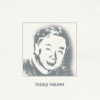 A titan of the Japanese noise scene and a long time member of both Hijokaidan and the Incapacitants, Mikawa has only made very few solo works without the participation of other parties. Here is one of the rare opportunities to hear everyone's favorite banker in his own personal element.
A titan of the Japanese noise scene and a long time member of both Hijokaidan and the Incapacitants, Mikawa has only made very few solo works without the participation of other parties. Here is one of the rare opportunities to hear everyone's favorite banker in his own personal element.
Hearing this, it's hard not to be reminded of the Incapacitants, the prolific duo that, along with former C.C.C.C. member Fumio Kosakai, has cemented Mikawa as one of the "gods of noise" worldwide. And in that regard, this disc fails to disappoint: there is a general similarty to the Incaps' approach of pure noise for the sake of noise, along with a healthy mental picture of sake bars and Japanese pro-wrestling. However, without his bulkier partner assaulting a table of electronics next to him, Mikawa's penchant for wet, sloppy sheets of distortion is a bit less obscured. While the Incapacitants usually swarm the landscape like a huge storm cloud of white noise and one thousand luchadors vying for champion of the universe, here there is a much smaller cloud of fog blowing across the land.
The opening "Vietnam Forever" is all squeaky, waxy shards of noise that are like large blocks of Styrofoam being rubbed together and amplified loud enough for the heavens themselves to hear, which continues to "Bando Namida-Ame," where it is supplemented with a nauseous, undulating pulse.
"Drinking Gallons of Soy Sauce with Beer" is one of the two monolithic 20+ minute pieces on here, this one all stuttering and buzzing race car engines time stretched to infinity. The slowed down form of chaos makes it somewhat easier for the listener to actually appreciate what is all going on here, so it almost serves as an Incapacitants Unplugged session.
Others don't thrive on such subtlety, as the shrill feedback loops of "You Say West River" will probably drive any nearby canines into a spastic barking frenzy. Massive closer "Mud Wrestling Against D" serves almost as a megamix conclusion to the album, mixing in the shrill tones, squeaky rattles, and sustained digital roars that make up the Mikawa sound, all given a nice clear coat finish of reverb. It also serves a great example of just what makes well done noise so great: the layers of complexity that build upon each other reveal new and different textures and patterns on subsequent listenings.
Gyo-Kai Elegy isn't a revolutionary noise work, nor does it strive to be. And it doesn't have to be, because it manages to excel in a genre that is never lacking participants, but instead shows a grand master flexing his muscles in a manner that will hopefully scare off a fair share of undeserving posers from turning their Digitech Death Metal pedal up any louder.
samples:
Read More
- Administrator
- Albums and Singles
 When a label as esoteric as Sedimental describes a release as their "most challenging," adventurous listeners should know they're in for something fascinating. The disclaimer should not be ignored because it is a difficult excursion into dense, hostile worlds of sound with a complexity that makes additional listening mandatory.
When a label as esoteric as Sedimental describes a release as their "most challenging," adventurous listeners should know they're in for something fascinating. The disclaimer should not be ignored because it is a difficult excursion into dense, hostile worlds of sound with a complexity that makes additional listening mandatory.
A trans-continental collaboration (Brendan Murray lives in Boston, Seth Nehil currently resides in Portland, Oregon), this disc actually has its roots in a live collaboration between the two artists in 2003 and 2004, recordings of which are used as base elements for the bulk of the tracks here. That is not immediately apparent though, as the tracks are extremely focused and tightly structured, even if it seems like unbridled chaos at first.
"Massive" would be an excellent one-word adjective to describe this disc. Not to say there aren't quiet or subtle elements to this work, because there are, but when the sound gets "big," it gets "really big." Even the field recordings of "Feet Wrap Around Chair," which are mostly fragments of surrounding anonymous conversations, there is a wall of reverb that's so thick its almost tangible enshrouding everything except the electronic sounds that crop up here and there throughout the mix. The electronic drones of "Waving," which actually resemble that of an organ are again massively thick and overpowering, but nicely augmented with a subtle bed of quiet electronic textures that compliment the noise nicely.
Beyond the electronics experimentation there are occasional percussive elements too, of the more improvised metallic variety, and more instances of field recordings as well, like the heavily amplified and distorted mechanical sounds of "Underneath A Portrait," which may very well be recorded from underneath of a traveling subway car.
The quieter moments of the disc might not be as prevalent, but still convey their own mood and feeling, like the buried, emergency beacon like tones of "Wake of Scent" that lead the listener in to shore among the battering waves of feedback around the track. These sporadic peaceful moments also serve to reinforce the more violent ones, and "Clothes Tear" as a title gives a more than fair indication of the aggression to be heard: the dying gasps of a foghorn, sounds from a sampler on its last legs and painful electronic squeals.
Brendan Murray and Seth Nehil have collaborated with a release that probably won't be bringing on many new fans with its innate difficulty, but for that reason it excels and thrives in its complexity and makes the reward for the more determined listener all the sweeter.
samples:
Read More
- Administrator
- Albums and Singles
 Sharon Jones & The Dap-Kings' third full-length is proof positive that musical quality will always triumph. Their subtle take on soul and funk is terrific fun for everyone and their success mocks any attempt at narrow definitions of genre, beauty, the female form and what is hip.
Sharon Jones & The Dap-Kings' third full-length is proof positive that musical quality will always triumph. Their subtle take on soul and funk is terrific fun for everyone and their success mocks any attempt at narrow definitions of genre, beauty, the female form and what is hip.
Sharon Jones was born in Augusta, Georgia, the hometown of James Brown. She reminds me, though, of some of the many (largely unknown) singers who create goose-bumps on the skin of even the most casual wanderer entering the gospel tent at the New Orleans Jazz & Heritage festival. Most of those performers have day jobs, so it doesn't surprise me at all to hear that Sharon Jones has had a string of jobs including prison guard. Similarly, it's not unusual that she comes from the tradition of singing in church. Jones finally broke into recording after countless rejections based on factors other than her voice: she is "full-figured," not everyone's idea of an oil painting, and is now in her fifties. Cleverly, the Dap-Kings play their part by doing a great job of creating space for Jones to do her thing. It's like a team game plan in sport and it is an excellent plan because she scores every time.
The title track to this new record begins like a dirge but quickly smacks into life with a finger-click rhythm, the proverbial "fat" horns and Jones' sublime wailing. A couple of minutes in, they slow the track down to a stride blues piece which also works perfectly. Like most of the cuts here, it fits the previously important blueprint for radio and jukebox play. It is also a contender for best song of the year. "Nobody's Baby" is solidly influenced by James Brown or Funky Meters; a retracing of grooves for sure, but with such a light touch and over such rock solid territory that there is no danger of it sounding worn out. On this track Jones sings a little quicker, tighter, tougher, and for reasons I can't quite fathom it's deeply pleasing to hear her spit out the word "cabbagehead." The next piece, "Tell Me," introduces a breezier pace and Jones' voice floats on the rhythm as if riding on a cloud like a Japanese Ninja Spirit.
There are a couple of pieces that are more overtly gospel-influenced: "Humble Me" and "Answer Me" are imbued with a depth of feeling that contradicts any suspicion that Jones could do this stuff in her sleep. As with all her work, the rhythmic lines, melodies and riffs go back and forth between gospel, soul, old-school R & B, and funk. Thankfully, the music invariably avoids stepping in stinky cliché, and sounds fresh and uplifting. This makes three nifty full-length records in a row by the group, with some interesting singles t' boot. Never muddled or formulaic, their economy and spirit can be a joy to listen to. Maybe the analog production and the 1970s vintage instruments help, but I reckon it is down to talent, taste and Jones' sheer class. As testament to her power, over in YouToob Land the person who has posted the most videos of her music previously posted nothing but metal.
I'm determined to avoid using the word "retro" because Sharon Jones is the real deal. She isn't playing, she inhabits the music. Jones is funk, in the same way as a guy like drummer Johnny Vidacovich is rhythm in everything he does; even the way he talks and walks down the street. When Sharon Jones sings "Make me grateful for my voice/ That I might lift you up, yeah!" I don't much care whether she's thanking a creator for her talent or talking about reciprocating the appreciation of her audience, because either way, it sounds great! 100 Days, 100 Nights is no pastiche, no imitation or approximation. Everyone should benefit from stepping lighter after hearing this stuff. I think it's time to take the Lee Dorsey pledge: "Everything I Do Gohn Be Funky (From Now On)."
samples:
Read More
- Administrator
- Albums and Singles
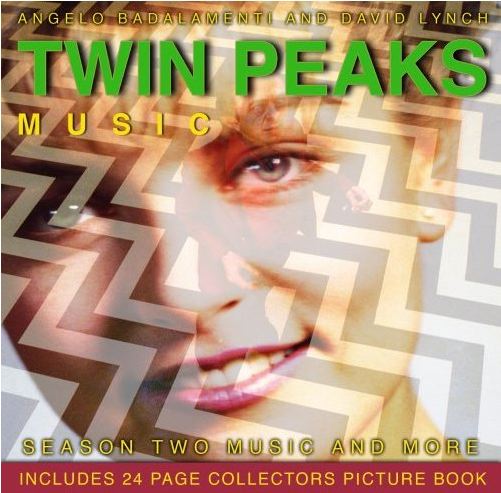 Angelo Badalamenti is one of film and television's greatest composers, and his association with David Lynch over the past two decades has yielded some of the most haunting, beautiful, dark and unsettling soundtrack music ever produced. Of all these collaborations, arguably the finest is Badalamenti's music for the cult TV show Twin Peaks, and this disc finally collects all of the great music inexplicably left off of the heretofore released soundtracks for the series and its film prequel Fire Walk With Me.
Angelo Badalamenti is one of film and television's greatest composers, and his association with David Lynch over the past two decades has yielded some of the most haunting, beautiful, dark and unsettling soundtrack music ever produced. Of all these collaborations, arguably the finest is Badalamenti's music for the cult TV show Twin Peaks, and this disc finally collects all of the great music inexplicably left off of the heretofore released soundtracks for the series and its film prequel Fire Walk With Me.This release is long overdue. In the days following the show's initial run, people were so anticipating a disc like this that they finally gave up on the possibility of it coming out, bought Danelectros and formed bands like Labradford and Tortoise. Even Stars of the Lid recorded "Soundtrack For Twin Peaks Episode 30," in an effort to recreate the dark string drones and achingly slow-motion bebop that finally appears on this disc as "Dark Mood Woods/The Red Room." In fact, the conscious invocation of Badalmenti's singular combination of ambient mood music, hallucinatory 1950s nostalgia, emotive synths and languid jazz has been a staple in the "post-rock" scene for the past 15 years. The aforementioned groups managed to have their own identity, but groups such as Bohren Und Der Club of Gore took their painstakingly precise emulation of Badalamenti's Twin Peaks to ridiculous extremes on albums such as Sunset Mission. The leitmotifs and musical centerpieces Badalamenti composed for Lynch's uniquely strange cinematic worlds are so immediately recognizable, so utterly unique, that—in the annals of soundtrack music—they can only be compared to Ennio Morricone's compositions for Sergio Leone's spaghetti westerns, or Goblin's music for Dario Argento's horror films. What is it with Italians and great film music?
This disc, which finally collects many of the soundtrack pieces missing from both the Soundtrack from Twin Peaks disc and the Fire Walk With Me soundtrack, has been released in tandem with the complete Twin Peaks TV series on DVD, which is out at long last. As one who has watched the entire series repeatedly over the years (often on poor-quality Worldvision VHS or bootlegs taped off Bravo), listening to this disc immediately put me back in the strange world of Twin Peaks. It's a place where the sexiest, breathiest downtown cocaine bebop jazz rubs shoulders with spare, fragile piano motifs; where kitschy, nostalgic '50s rock n' roll bleeds into moody, ambient layers of atonal, synthesized strings; where rave music is reimagined as dark, slow-motion country music pulled through the looking glass. This disc announces itself immediately as being far superior to the first Twin Peaks soundtrack; not only because of the range of material available here, but because it is thoughtfully sequenced and each piece is given its own discrete track. The first TP soundtrack made the mistake of being too samey, reusing the same themes multiple times throughout the disc, combining many of Badalamenti's best pieces into long "megamixes" that blunted the music's effect. Also, that first disc contained three Julee Cruise cuts that were already widely available on the Falling Into the Night CD. No such problems here, as this material is 100% previously unreleased in this form.
Much of the tracklist for this CD was produced in open conversation with fans of the show, Lynch and Badalamenti asking people to name their favorite musical bits and themes that had not yet appeared on the previous soundtracks. Because of this process there is nary a wasted track here. "Hook Rug Dance" was a fan favorite: the soundtrack to a rare moment of honest sentimentality for the show, in which Ben and Jerry Horne fondly recall an event from their youth: their babysitter Louise Dombrowski dancing with a flashlight on a hook rug. The song uses vintage '50s echo effects and guitar to deliver a song so sweetly nostalgic that it is positively hallucinogenic. Shelly's character theme (called, appropriately, "Shelly") combines the brushed snares and hi hats of Badalamenti-style bebop with sweeping string arrangements. "Audrey's Prayer" is all soaring strings, closer in its style to the oft-sampled "Laura Palmer's Theme." Alicia Witt's jaunty piano playing for the Hayward/Palmer dinner party in the season two opener is here as "Hayward Boogie." The barbershop quartet that incogruously apppears in episode nine as Cooper receives word that Windom Earle has escaped the insane asylum is also here, perhaps in the interest of completeness.
The inclusions I appreciated the most were the abstract country-and-western pieces such as "Night Bells," formless mood pieces that combine strumming on resonater-style guitars with strange tone-bending effects. If you ever wanted to know why indie post-rock has been obsessed with these kinds of sounds for the past 15 years, look no further. I was pleasantly surprised to find "Blue Frank" here, the companion piece to "The Pink Room" (which appeared on the Fire Walk With Me soundtrack). This is yet another headlong dive into the druggy, trance-inducing country-blues heard during the scene in FWWM in which Laura and Donna cross the border into Canada to attend one of the most fucked-up, bizarre hillbilly raves ever imagined on film. I was a bit taken aback by the inclusion of "Just You," complete with vocals by the ever-annoying James Marshall, but it's actually quite a nice little slice of '50s nostalgia once you forget about the whole annoying character arc of James in the show itself.
The disc ends on a brilliant note, with the nine-minute "Dark Mood Woods/The Red Room." This is the stuff out of which legends are made. The piece is so dark and immersive, so haunting and evocative, that if you have seen episode 29 of the show you simply cannot help but imagine the Pacific Northwestern forest on a cold moonless night, the wind blowing through dry branches, red curtains appearing in a circle of sycamore trees; strange liminal zones where the ordinary becomes surreal, and the surreal becomes ordinary. Badalamenti combines deeply atmospheric synthesized Roland strings with various samples, time-stretched and reverberated into a dark oblivion. Then slowly, the brushed snares, resonating guitar and irregularly fingered bass come in, complete with odd echoplexed and backwards-tracked effects and little sonic details that rise out of the murk at random. Played back-to-back with Jimmy Scott's vocal take on "Sycamore Trees" (from the FWWM soundtrack), the strange brilliance of the Badalamenti/Lynch soundworld comes into focus. Season Two Music and More has been a long time coming, and luckily for everyone, it's better than anyone could have expected.
samples:
Read More
- Administrator
- Albums and Singles
 After recovering from the sonic assault of the Consumer Electronics LP on Carlos Giffoni's No Fun Productions label, these ears are primed for the label debut and first ever CD release from Nate Young (Wolf Eyes) and Steve Kenney's (Isis & Werewolves) Demons project. The title, Evocation, suggests this is not going to be for the faint hearted. Bring it on...
After recovering from the sonic assault of the Consumer Electronics LP on Carlos Giffoni's No Fun Productions label, these ears are primed for the label debut and first ever CD release from Nate Young (Wolf Eyes) and Steve Kenney's (Isis & Werewolves) Demons project. The title, Evocation, suggests this is not going to be for the faint hearted. Bring it on...
Detroit, the birthplace of techno, is also the breeding ground for a different kind of electronic music. Using the analog synthesizer, Young and Kenney build abstract analogue worlds which are effortlessly rich and complex in texture. Bubbling synths, shrieking oscillations, gritty sub-bass, high pitch frequencies all carefully considered and sculpted into soundscapes that feel simultaneously gargantuan, claustrophobic and occasionally terrifying.
Opener "Firewalk" begins with deep drones and eventually sounds like a huge fire breathing prehistoric robot annihilating and crushing a city scape into absolute oblivion with glowing red eyes shooting out mighty lasers that sound like Pauline Oliveros at her finest. The tone is set for the tracks that follow however this track ends abruptly and a little prematurely. "Grey Lady" begins with dissonant tones and then what sounds like a demonic cyborg cat vomiting square waveforms. As the track progresses the synths become even murkier and discomforting until they sound like phasing chain-saws warming up for a mass murder. This is bleak future doom that owes as much to the BBC Radiophonic Workshop as it does to Throbbing Gristle. Playback at high volume is recommended for the full effect which allows the listener to fully visualize these darkly psychedelic sound worlds. The piece comes to a close with the whole thing sounding like it's collapsing in on its self.
"Pre-existence" sounds like a post apocalyptic, windswept landscape being investigated by beings from another world. The sounds of nuclear winds and the blaring, thunderous hum of their crafts engines hovering over the land as the disturbing sounds of alien life forms can be heard in the distance. This is a piece that's extremely vivid and is my personal favorite on the CD. It's a popular misconception that artists working within the "noise" scene merely create mindless ear shredding aggressive noise. To those critics I would urge them to listen to this brilliantly conceived slice of pure analogue science fiction which is reminiscent of KK Null's recent output. A fourth and final untitled track which has no mention on the artwork is also included. This continues the vibe which runs throughout using many of the same textures with the addition of some sounds which border on being rhythmic. Electronic pulses shoot from all directions while a booming rumble that Lustmord would be proud of creates a hazey druggy state. The powerful almost seizure inducing occasional blasts of noise are reserved for the final stage of the album and are used sparingly. As the track closes I'm left wanting a little more yet some of the earlier moments were so awesome that wanting more is just expecting too much.
I knew this was going to be an interesting listen as I'm familiar with a couple of previous Demons titles. I was not expecting to be blown away, as I have listening to the peak moments of "Evocation". This is some of the darkest, futuristic music I have heard all year. A stunning work created by a pair of visionaries who deserve the attention of anyone who cares about electronic music and analogue synthesizers.
Read More
- Administrator
- Albums and Singles
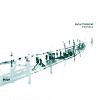 Ten years following its initial release, the debut album from Christian Fennesz gets the reissue treatment. Sometimes quite different from the joyous nature of his subsequent albums, it hints at the possibilities of what was to come. It is an interesting−if not altogether brilliant−document of his early work, some songs being mere experiments in texture and others where all the elements gel together to hit home.
Ten years following its initial release, the debut album from Christian Fennesz gets the reissue treatment. Sometimes quite different from the joyous nature of his subsequent albums, it hints at the possibilities of what was to come. It is an interesting−if not altogether brilliant−document of his early work, some songs being mere experiments in texture and others where all the elements gel together to hit home.
This is my first exposure to Fennesz's earlier works and it is a little bit of a surprise. The techniques and sounds that he later developed on albums like Endless Summer and Venice have not yet appeared. Instead of the bright and shimmering music I have become so used to there is a dark and gloomy ambience. However, moments of brilliance shine through, forewarning of what was to come. Even the now uncharacteristically menacing style of Hotel Paral.lel is good in its own way and anticipates the warm, glitchy textures of later Fennesz material. The grinding rhythms of "Santora" are mildly aggressive but it is easy to see how the likes of this would get toned down and a more melodic sensibility will come through.
Stepping back from a dissection in hindsight of Hotel Paral.lel, the music taken on its own is a little distracted sounding but very good nonetheless. It is not immediately captivating (although the buzzsaw distorted guitar on "Dheli Pizza" is nothing if not attention grabbing) but reveals itself over a few listens. The music is split into somewhat noisy abstractions like "Nebenraum" and later a more rhythmical approach is taken. "Szabo" and "Traxdata" both come closer to the Fennesz I know and love. The beats are a little straightforward but the use of texture is what makes these tracks stand out. The breaking up of the sound and the introduction of glitches (yes, that word again) is like exploding candy for the ears. It is the final track (of the original issue, there are two bonuses included with the reissue) that prove what Fennesz is capable of; "Aus" is four minutes of processed guitar splendour.
To be honest, I much prefer where Fennesz has gone from here but it is nice to have this available again for a more complete picture of his work. Hotel Paral.lel may not be his best but it still is a quality album. For those who have the album from its original release, I cannot say if there is a difference in terms of sound quality and the bonuses (a previously vinyl only piece, "5," and a video for "Aus") are not substantial enough to be too worried about. Nevertheless, this is a nice release for the curious late comer to Fennesz to hear where it all began.
samples:
Read More
- Administrator
- Albums and Singles
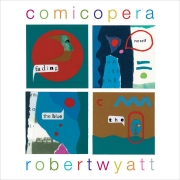 Judged solely by his recordings, Wyatt seems a low-key, wry, extraordinarily loyal and honest person. Yet opinions about his work probably cover a range comprising love, surprise that he's still alive, disinterest, and hate. For sure there are conflicting verdicts on his voice. Love it, like it in small doses, or loathe it, Wyatt's hasn't changed a great deal since the late 1960s. It remains a singularly unadorned expression of our flawed humanity.
Judged solely by his recordings, Wyatt seems a low-key, wry, extraordinarily loyal and honest person. Yet opinions about his work probably cover a range comprising love, surprise that he's still alive, disinterest, and hate. For sure there are conflicting verdicts on his voice. Love it, like it in small doses, or loathe it, Wyatt's hasn't changed a great deal since the late 1960s. It remains a singularly unadorned expression of our flawed humanity.
Anyone solidly in the pro-Wyatt camp, as I am, enjoys his raw-beating-heart-on-sleeve approach to love songs. Perhaps Matching Mole's "O Caroline" makes him cringe now, maybe it lets his detractors point to his weakness and self-indulgence, but it still sounds blissful to me. Comicopera has a classic realist love song "Just as You Are," which gives co-writing credit to his partner, Alfreda Benge. The essence of the song revolves around the line "I'm never going to change a thing about you," and contrasts weary resignation with contented acceptance. Dual meaning is a longstanding feature of Wyatt's work, dating back to the punned titles of Soft Machine pieces, and it perfectly matches the cracked, floating uncertainty of his voice. On "Just as You Are", Benge's viewpoint is tenderly sung by Monica Vasconcelos. Just as fine is Anja Garbarek's "Stay Tuned," a bittersweet study of living with another person and becoming part of the furniture. The light but painful track stops just short of pleading.
As the fantastic "Shipbuilding" illustrated, Wyatt is much less direct about politics than love. Agree or disagree with his views, he invariably tackles tough topics with a subtlety that belies the depth of his passion. During "A Beautiful War," assuming the character of a bombing pilot, he convincingly portrays well-meaning patriotism and quasi-evangelical euphoria. Not quite a nuke-straddling Slim Pickins for the 21st Century, but close. Immediately afterwards, "Out of the Blue" gives voice to the horrifying disgust and numb outrage of the bombed. This piece features Wyatt playing the Enotron: the sampled voice of Brian Eno. The final few tracks are sung in a variety of non-English tongues, to express his contempt for what he terms "the Anglo-American war." Consequently, ending the record with "Hasta Siempre Comandante" comes off as a subtle way to hint at the inconsistencies of US foreign policy, rather than as a salute to the iconic Che Guevera.
All this heartfelt expression needs contrast and it's supplied by several clever instrumentals. One of these, "On the Town Square," is a groovy guitar, cornet, saxophone and steel pan call and response number; a swinging meld of modern jazz and early calypso. The title of the piece, and its jolly feel, suggest ignorance of the reality of the private lives of others and of the nature of war. Brian Eno, Phil Manzanera, Paul Weller, Yaron Stavi, David Sinclair and Annie Whitehead are amongst the cast of characters helping out on the album. Perhaps in deference to Wyatt's notorious socialism no one hogs the limelight. Despite being divided into three sections, Comicopera has a consistent feel and Eno even manages to avoid the kind of production that made the title track from Shleep stick out like a sore thumb. Robert Wyatt has revealed his struggles with incontinence and depression. Thankfully, he remains a creative force. And he's not done yet.
Read More
- Administrator
- Albums and Singles
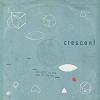 It has been over ten years since their first album and, granted there has been a big shift in the personnel on board, the group are barely recognizable in terms of sound and volume. This fifth album is their quietest, with all muted moods and introspective songs. It is a solid release by the band and, although sharing on paper many traits with the folk revival/fad of recent years, sounds like its own little world. The songs here are calm and tender; the album has a soothing effect on me from the moment it starts.
It has been over ten years since their first album and, granted there has been a big shift in the personnel on board, the group are barely recognizable in terms of sound and volume. This fifth album is their quietest, with all muted moods and introspective songs. It is a solid release by the band and, although sharing on paper many traits with the folk revival/fad of recent years, sounds like its own little world. The songs here are calm and tender; the album has a soothing effect on me from the moment it starts.
The sedate pace of Little Waves make for a relaxing listen; the ten songs are not quite lazy but certainly calm and unhurried. Gentle acoustic guitar forms the basis for the musicians to add the occasional detail such as trumpets and the odd electric guitar line. There is a strong sense of the members of Crescent giving each other space such as on "Nearly Ready," where the brass wind instruments are introduced but only for short intervals, making them fit in naturally with the simple arrangement. One of the best songs on the album is "Come into the Shade," which is based around a gorgeous and slightly off-kilter melody and snatches of audio recordings of people talking. The song has a grainy texture, sounding like it was unearthed rather than recorded by the band.
The croaky vocals on "Our River" come as a surprise after Matt Jones' wonderfully hushed singing on the rest of the album. Jones has a voice hewn from granite most of the time but here his voice is a particularly crumbly piece of stone, the cracks adding buckets of character to this song. As a final track it closes off the album perfectly, his tired and broken voice can go on no more. On this song, and indeed throughout the album, his lyrics are proficiently written yet completely natural and uncomplicated sounding. Jones comes across as being comfortable with his words; he does not seem to feel the need to add dramatic inflections to get the point across. Much like the music, the lyrics are straight to the point and given their own space.
It would be unfair to compare Little Waves to Crescent's earlier output as they may as well be a completely different band in terms of sound. This is as good as the early albums but in the same way that a nice cup of tea is as good as a sandwich. Most people will like both but there will be the odd person who will not like this particular cup of tea. However, all food talk aside, what is most impressive about this album is the fact that far from sticking in a rut, Crescent continue to try new things and most importantly do these new things well.
samples:
Read More
- Administrator
- Albums and Singles
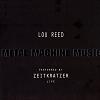 Lou Reed's original release of Metal Machine Music had gathered an awful lot of mythology by the time I got around to hearing it. However, my tolerance for noise already well developed thanks to more modern noise artists, the impact this album had on me was negligible. I appreciated the power of the statement but the actual musical content was underwhelming. Since my first encounter with it, I have grown to enjoy it more, no longer looking for a sensory overload or volume one-upmanship. Instead I accept it as a harsh sonic soundscape, something to pick apart rather than endure. As such, when I initially read about Zeitkratzer's arrangement of Metal Machine Music, my interest was piqued to say the least, how would "ordinary" musicians play Reed's noise?
Lou Reed's original release of Metal Machine Music had gathered an awful lot of mythology by the time I got around to hearing it. However, my tolerance for noise already well developed thanks to more modern noise artists, the impact this album had on me was negligible. I appreciated the power of the statement but the actual musical content was underwhelming. Since my first encounter with it, I have grown to enjoy it more, no longer looking for a sensory overload or volume one-upmanship. Instead I accept it as a harsh sonic soundscape, something to pick apart rather than endure. As such, when I initially read about Zeitkratzer's arrangement of Metal Machine Music, my interest was piqued to say the least, how would "ordinary" musicians play Reed's noise?
Quite well is the answer. Although I can see that it is only conventional instruments, the noise conjured up is unreal. Obviously Zeitkratzer never sound as metal or machine-like as Reed's original but they still pack as much of a punch as that feedback-ridden LP. The end result of Ulrich Krieger's score is a hybrid between an orchestra tuning up and a steamroller running over an instrument shop. It does sound like Metal Machine Music but due to the organic nature of the instruments, it sounds richer and more vivid. It is alive rather than a machine. Ironically, the weakest part of the performance comes from Reed himself. Towards the end he comes out and plays the guitar on his own, completely disrupting the vibes that Zeitkratzer have built up. If he had only joined them without them stopping it would have been immense but the jarring change from the full orchestra to a guitar being ran through some rather crummy sounding digital effects really takes away from the power of the piece.
I must admit that I find the DVD a bit superfluous, it is nice to watch once but it is never going to be a regular feature on the telly here. On the small screen, the sight of a bunch of men sawing madly at violins and cellos or blowing into saxophones until the veins on their heads pop out gets tedious before the first movement ends. Also add the fact that some of the camera angles are made from some very poor quality video, looking like they were shot on a webcam, not making for a particularly thrilling watching experience. The interview with Lou Reed is at least interesting but again it is something that is worth watching once; it's not going to be on regular rotation. The sounds suit the abstraction of a purely audio release and thankfully there is a CD included with the full performance so I can safely file away the DVD for a time when I can be bothered watching it.
Taken as a whole Zeitkratzer's Metal Machine Music is a testament to the patience of the group (both in transcribing the music and in playing such an arduous piece). It is definitely a more musically enjoyable experience than Reed's Metal Machine Music, the range of sounds seems to be larger and there is a lot more texture to the noise. I imagine being there in the room with this playing is an intoxicating experience, as much as I did not enjoy watching the footage, seeing the musicians in the flesh would be an entirely different story.
samples:
- Metal Machine Music (first movement)
- Metal Machine Music (second movement)
- Metal Machine Music (third movement)
Read More

